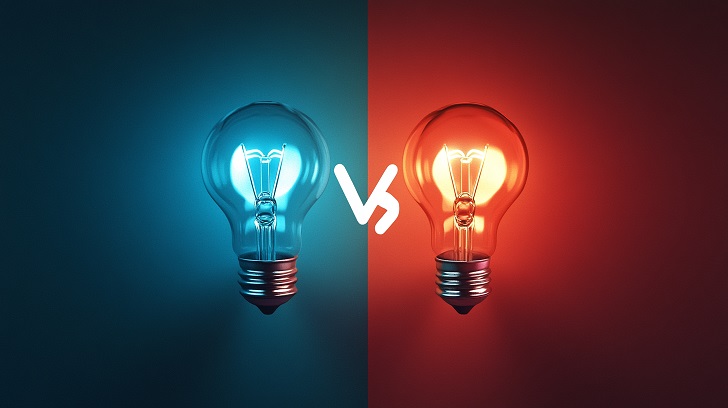In the thrilling journey of turning a spark of innovation into a flaming success, entrepreneurs stand at a crossroads: to leap towards a Minimum Viable Product (MVP) or to sprint towards a full product launch. This decision can make or break your startup’s trajectory, making it worthwhile to pause and ponder the best route. With your skin in the game, understanding the dichotomy between MVP and product launch is critical in navigating the startup ecosystem.
Minimum Viable Product — The Lean Startup’s Launchpad
On one side of the coin, we have the concept of the MVP, an approach made famous by Eric Ries in The Lean Startup. It’s about creating a product with just enough features to satiate early customers and provide a feedback loop to guide future development. The MVP is not a half-baked version of your dream product; rather, it’s a strategic, smartly designed first step that validates your business concept.
The benefit of an MVP lies in its potential for rapid market entry and the ability to gather valuable customer feedback. When employing the MVP strategy, you’re not looking to climb to the top of the mountain on your first day. Rather, it’s about gathering gear, assessing the terrain, and making the first trek, armed with adaptability. Here are some compelling reasons to go the MVP route:
- Early adopter engagement: MVP allows you to engage with early adopters, who are essential in shaping your product’s future.
- Cost efficiency: Developing an MVP can be significantly less costly than a full launch, maximizing the use of scarce startup resources.
- Risk reduction: With an MVP, you minimize the risk of building a product no one wants.
- Adaptability: It enables a flexible approach to product development, with room to pivot based on customer feedback.
Full Product Launch — The Bold Stake Your Claim
Conversely, opting for a full product launch is akin to serving a fully-cooked meal rather than a taste test. This means your product comes decked with all the features, polished and poised to wow your target market. This route is for those undeterred by increased upfront investment and who believe that their vision aligns perfectly with their customer’s needs.
The motivation behind a full launch can be compelling too:
- Market impact: A full launch aims to create a splash, establishing brand presence and dominance.
- Comprehensive solutions: It offers a complete end-to-end solution to customers, which can enhance user satisfaction and loyalty.
- Competitive advantage: If the market is highly competitive, a full launch can help you establish a robust foothold.
Yet, high stakes come with high risks. As Harvard Business School professor Clayton Christensen notes, over 30,000 new products are introduced every year, and 95% fail. The cost of fully fleshing out a product upfront can be hard to recoup if consumer interest doesn’t meet expectations.
The Right Choice for Your Startup
Choosing between MVP and a full product launch demands a deep understanding of not just your product but also your audience and market:
- Assess the audience — If your product serves a niche market where customers are eager for comprehensive solutions, consider a full launch. If the market has yet to be proven, an MVP could be safer.
- Consider resources — Evaluate your financial capability and risk tolerance. An MVP might be the way to go if resources are tight.
- Market dynamics — For fast-moving industries, speed is of the essence, making MVPs ideal to stay ahead. In more established sectors, a full product with unique value can carve out relevance.
Balancing Act
Ultimately, the MVP and full product launch are not at odds but different points on a spectrum. A successful MVP can build the momentum that leads to a grand full-fledged launch. In fact, many of the most successful companies started with an MVP and gradually scaled up, Facebook and Amazon being the classic examples.
Furthermore, It’s worth noting that a hybrid approach is also viable. Kickstart with an MVP to test waters and iterate swiftly, preparing for a more comprehensive launch down the line. This can provide a balanced strategy that weakens the cons of each approach.
The MVP Phase — An Investment in Your Startup’s Future
If we lean into MVP philosophy, it is essential to note that an MVP is not a shortcut to success; it’s an investment in your startup’s long-term viability. An MVP should deliver a core value proposition that aligns closely with consumers’ needs, ensuring that subsequent iterations continue to enhance the value delivered.
Conclusion
The key takeaway is not which is better, MVP or full product launch, but understanding which is better for your startup. Study your market, evaluate your resources, and consider your team’s strengths. Whether you choose the risk-tempered path of the MVP or the ambitious leap of a full product launch, ensure that the choice fits your unique business landscape.
The power of your entrepreneurial journey lies in informed choices. Embrace the MVP mindset with an eye towards growth, or launch with a bang, making sure that your product resonates with your target audience. This is a strategic dance, one that will shape the future of your endeavor.




